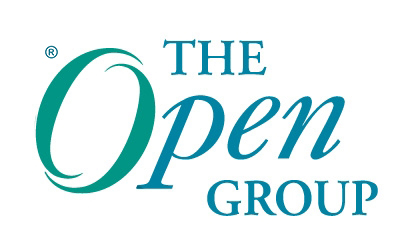
To learn more about the TOGAF Certification Portfolio, we recently reached out to Andrew Josey, VP Standards and Certification at The Open Group. Josey oversees all certification and testing programs of The Open Group. He also manages the standards process for The Open Group.
Since joining the company in 1996, Josey has been closely involved with the standards development, certification and testing activities of The Open Group. He has led many standards development projects including specification and certification development for the ArchiMate®, TOGAF®, POSIX® and UNIX® programs.
In addition, he is a member of the IEEE, USENIX, and the Association of Enterprise Architects (AEA) as well as holds an MSc in Computer Science from University College London.

Question: What was the driving force behind creating the TOGAF Certification Portfolio?
Answer: The TOGAF® Certification Portfolio has been created to meet the needs of an expanding user base and growing business demand for skilled users of the TOGAF standard. As businesses and sectors deepen the extent of their digital-first approaches, it is becoming increasingly recognized that domain knowledge in Enterprise Architecture is needed to holistically manage those operations. This is true not just in ‘traditional’ technology businesses, but in areas as diverse as government, retail, and health. The Open Group has a long-standing remit to enable and certify learning, giving practitioners access to useful, up-to-date skills, and giving organizations confidence that those skills are well-founded and well-evidenced. The TOGAF Certification Portfolio is our next step in this and modularizes how we approach certification.
Q: Who was it created for?
A: The TOGAF Certification Portfolio is designed to help learners access targeted learning, providing distinct learning paths in terms of both domain-specific expertise, competencies, skillsets, and a learning progression in terms of different levels of expertise. For example, within the portfolio an individual can choose to progress on a learning path starting with TOGAF Enterprise Architecture at the foundation level, then moving onto the skillset to become a practicing architect, then progressing to specialisms for aspects of the TOGAF Standard, 10th Edition, such as agile, digital and risk and security.
The TOGAF Certification Portfolio also provides learning paths for existing practitioners with TOGAF 9 qualifications. These portfolio learning paths can be used by individuals to update their skillset with the latest knowledge of the TOGAF Standard, 10th Edition, or take on additional specialisms.
Q: Why is it important?
A: Enterprise Architecture now underpins a wider breadth of specialist business activity than ever, with its approach finding powerful application in areas such as the Digital enterprise, security and Agile management as well as the broader business and technology functions that it is most associated with. This means that there is a growing demand for Enterprise Architecture skills which, in turn, means that more people are entering it as a career path.
As the discipline of Enterprise Architecture has grown, so has the detail and coverage provided by the TOGAF standard. There was a recognized need to think carefully about the underlying structure of the standard: there is an obvious demand for it to be rigorous, detailed, and clear, but it also needs to be agile enough to track changing realities in Enterprise Architecture, and modular in a way that enables organizations to be flexible in how they employ different elements of the standard. These needs informed the structure of the TOGAF Standard, 10th Edition, and also guided how the TOGAF Certification Portfolio has modularized certification into multi-level learning paths, giving learners a more accessible entry point to the standard which delivers real value to business uses.
Q: How does the structure of the Standard relate to the TOGAF Bodies of Knowledge (BoK)?
A: To meet the demand for distinct learning paths, the TOGAF Certification Portfolio has defined a number of bodies of knowledge drawn from a subset of the standard. A Body of Knowledge is the complete set of concepts, terms, and activities that make up a professional domain: as such, it defines the content for a certification and the material that is examinable. With the BoK approach, we can rigorously define a subset of the TOGAF standard which is relevant to a particular group of learners. For example, the BoK for the TOGAF Enterprise Architecture Certification is defined in two documents which can be updated and progressed without requiring a new version of the standard itself, while the standard can likewise take on a broader scope while remaining more usable by specific groups. In this way, the TOGAF Certification Portfolio will remain relevant through even relatively rapid shifts in the technological and business operating context.
Q: What else should readers know about the TOGAF Certification Portfolio?
A: Individuals who are TOGAF 9 Certified who wish to update their knowledge and skillsets as part of their professional development are catered for in the TOGAF Certification Portfolio by the TOGAF® Enterprise Architecture Bridge learning path. This learning path recognizes an individual’s existing knowledge investment, and consists of a reduced set of learning outcomes and is a separate examination. The learning path covers key changes in the TOGAF standard, together with material about the current context for Enterprise Architecture and modern best practices for the discipline.
Other learning paths available for individuals with TOGAF 9 certifications include TOGAF Digital Specialist, TOGAF Agile Specialist, and TOGAF Enterprise Architecture Leader.
